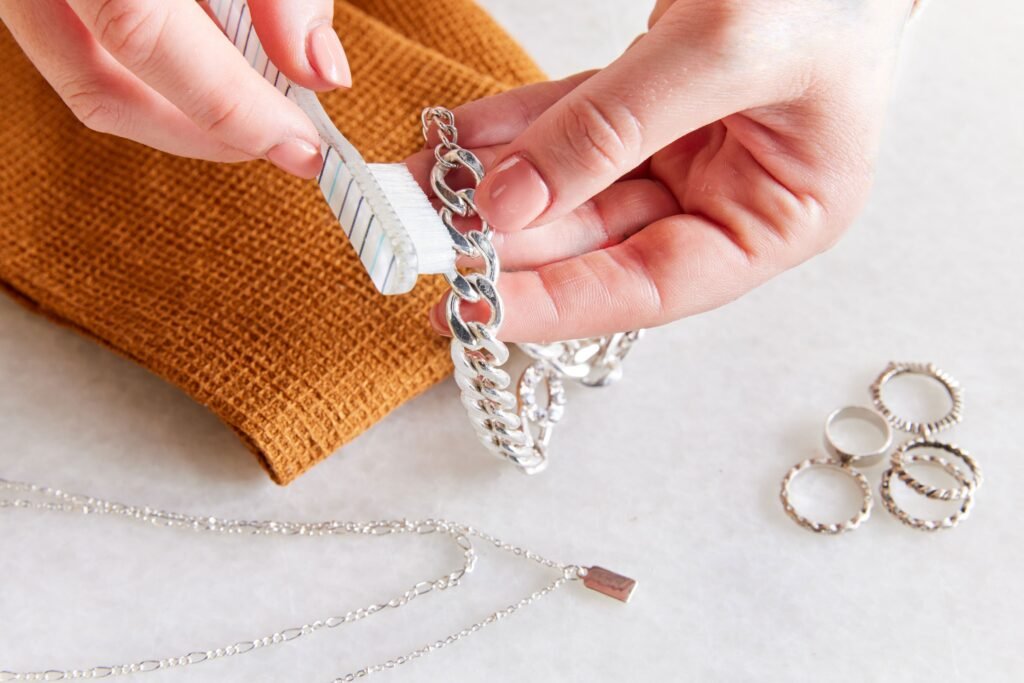Gold jewelry requires specific maintenance protocols to preserve its lustrous appearance and structural integrity over time. Gold bracelets for women in Australia face unique environmental challenges, including humidity variations, salt air exposure in coastal regions, and everyday contaminants that can diminish their brilliance. Professional jewelers recommend regular at-home cleaning as essential preventive care, particularly for pieces worn frequently. This comprehensive approach not only maintains aesthetic appeal but also prevents the accumulation of oils, lotions, and environmental debris that can cause long-term damage to delicate settings and intricate designs.
Understanding Gold Purity and Composition
Different gold purities react differently to cleaning methods, which makes understanding your bracelet’s composition absolutely crucial. Most women’s bracelets contain 14k or 18k gold, meaning they’re alloyed with other metals like copper, silver, or palladium for durability. I’ve learned through years of jewelry care that 24k gold pieces need gentler treatment since they’re softer and more susceptible to scratching.
The alloy metals in your bracelet actually determine how it responds to various cleaning solutions. Copper content can cause slight discoloration if exposed to harsh chemicals, while nickel alloys might react unexpectedly to certain cleaners. That’s why I always check the hallmark before starting any cleaning process.
Essential Cleaning Supplies and Preparation
You probably have most cleaning supplies already sitting in your kitchen. Warm water, mild dish soap, and a soft-bristled toothbrush form the foundation of effective gold cleaning. I keep a dedicated jewelry cleaning kit with microfiber cloths, cotton swabs, and a small bowl specifically for this purpose.
Avoid ultrasonic cleaners for home use unless you’re absolutely certain about your bracelet’s construction. I made this mistake once with a vintage piece that had loose stones – the vibrations actually loosened the settings further. Professional jewelers use these devices because they understand the structural limitations of each piece.
The Gentle Soaking Method
Start by mixing lukewarm water with a few drops of mild dish soap in a small bowl. The temperature matters more than you might think – hot water can actually damage certain gemstone settings or cause metal expansion that affects delicate mechanisms in charm bracelets or those with moving parts.
Let your bracelet soak for about ten minutes. This gentle approach allows accumulated oils and debris to soften without aggressive scrubbing that might scratch the surface. I usually use this time to prepare my other cleaning tools and inspect the piece for any obvious damage or loose components.
Detailed Cleaning Technique Applications
Using a soft-bristled toothbrush, gently work around chain links, settings, and decorative elements where dirt typically accumulates. Pay special attention to areas where the bracelet contacts your skin regularly – these spots collect the most oils and require more thorough attention.
For intricate designs or textured surfaces, cotton swabs work better than brushes. I’ve found that rolling the swab rather than pressing it gives better cleaning action without applying excessive pressure. This technique has saved several delicate pieces from unnecessary wear over the years.
Drying and Final Polishing Steps
Thorough drying prevents water spots and potential tarnishing of alloy components. Pat the bracelet dry with a lint-free cloth rather than rubbing, which can create micro-scratches on polished surfaces. Allow air drying for at least thirty minutes before wearing.
Final polishing with a jewelry cloth restores the original luster. Use light, circular motions and avoid over-polishing, which can actually remove thin gold plating on some pieces. This step makes an incredible difference in the final appearance – it’s where you really see the transformation from your cleaning efforts.

